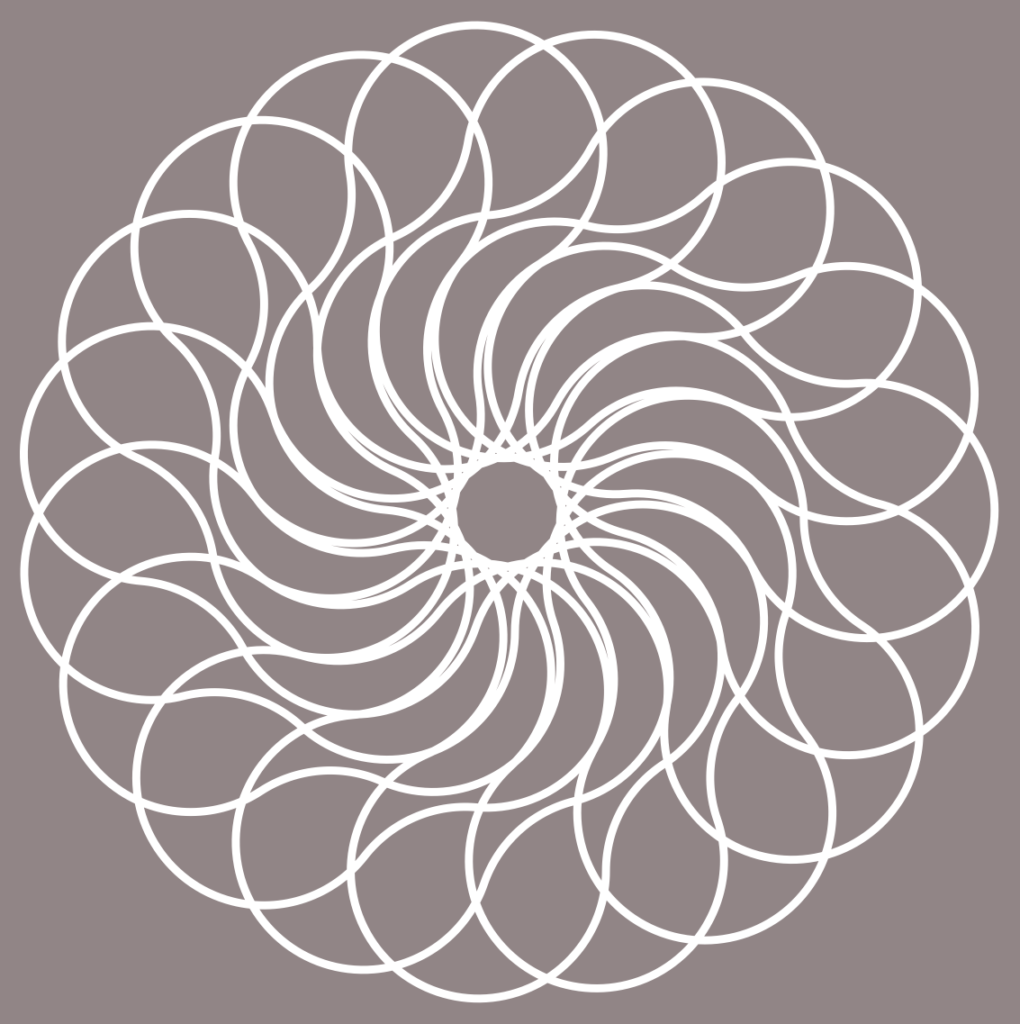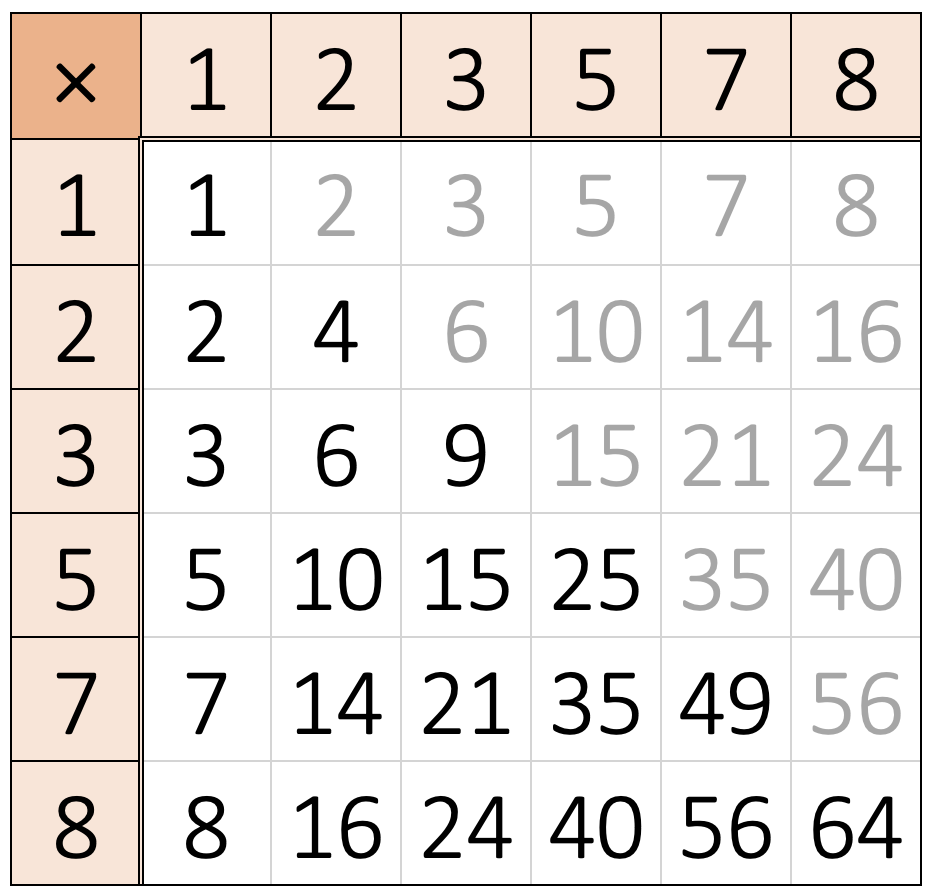
Hi! I’m Peter!
Blog
-
XOR Triangles
In this post, I’ll explore the math behind one of my Twitter bots, @xorTriangles. This bot was inspired by the MathOverflow question “Number triangle,” asked by user DSM posted in May 2020.
(I gave an overview of my Twitter bots @oeisTriangles in my post “Parity Bitmaps from the OEIS“. And if you want to build your own bot, I showed the steps for building @BotfonsNeedles in parts I, II, and III of my three-part series “A π-estimating Twitter bot”.)
In May 2020, MathOverflow user DSM posted a question “Number triangle” where they asked about the following construction:
Start with a list of \(n\) bits (\(0\)s and \(1\)s), and to get the next row, combine all adjacent pairs via the XOR operation, \(\oplus\). (A mathematician might call this “addition modulo \(2\).”) That is $$\begin{alignat*}{2} 0 \oplus 0 &= 1 \oplus 1 &&= 0 \quad\text{and} \\ 0 \oplus 1 &= 1 \oplus 0 &&= 1.\end{alignat*}$$
For example, starting with the row \(110101\), the resulting triangle is $$1~~~1~~~0~~~1~~~0~~~1\\ 0~~~1~~~1~~~1~~~1\\ 1~~~0~~~0~~~0\\ 1~~~0~~~0\\ 1~~~0\\ 1$$
We’re especially interested in understanding the triangles with rotationally symmetric boundaries (and consequently insides)! OEIS sequence A334556 enumerates all of the rotationally symmetric triangles with a \(1\) in the upper left corner.
@xorTriangles
My Twitter bot @xorTriangles posts these triangles four times a day, alternating between the triangles described above and a “mod \(3\)” analog. If you want to see how it works, you can check it out on Github.
Here is an illustration by Michael De Vlieger that shows many small XOR triangles and which is available on the OEIS.

Michael De Vlieger’s image on the OEIS.
My Twitter bot @xorTriangles currently follows the same convention.Mathematica
One way to find a rotationally symmetric XOR triangle is by setting up a system of equations. Using the convention that the top row of the triangle is labeled \(x_0, x_1, \dots, x_n\), we can use the Pascal’s Triangle-like construction to set up a system of linear equations over \(\mathbb{Z}/2\mathbb{Z}\). The solutions of this system of equations are precisely those that correspond to the XOR triangle we care about! This allows us to write down a matrix whose null space is the set of such triangles:
$$\begin{align}x_n &= x_0\\x_{n-1} &= x_0 + x_1\\x_{n-2} &= x_0 + 2x_1 + x_2\\ &\vdots \\ x_k &= \sum_{i=0}^{n-k} \binom{n-k}{i}x_i \\ &\vdots \\ x_0 &= \binom{n}{1}x_0 + \binom{n}{1}x_1 + \dots + \binom{n}{n}x_n\end{align}$$
Using Mathematica to find the null space works like this:
value[i_, j_, n_] := Binomial[i, j] - If[j == n - i, 1, 0]; xorSeedsBasis[n_] := NullSpace[ Table[value[i, j, n], {i, 0, n}, {j, 0, n}], Modulus -> 2 ];Because this is the null space of a \(n+1 \times n+1\) matrix over \(\mathbb{Z}/2\mathbb{Z}\), we know that there must be \(2^M\) rotationally symmetric XOR triangles, where \(M\) is an integer—which isn’t obvious from the original construction!
Related OEIS sequences
If you’re interested in learning more about this construction, reach out to me or take a look at some of these related OEIS sequences:
- A334596: Number rotationally symmetric triangles of size \(n\) with \(1\)s in the corners.
- A334591: Largest triangle of \(0\)s in the XOR triangle generated by the binary expansion of \(n\).
- A334592: Total number of \(0\)s in the XOR triangle generated by the binary expansion of (n).
- A334593: Total number of \(1\)s in the XOR triangle generated by the binary expansion of \(n\).
- A334594: Binary interpretation of the \(k\)-th row of the XOR triangle generated by the binary expansion of \(n\).
- A334930: Numbers that generate rotationally symmetrical XOR-triangles featuring singleton zero bits in a hexagonal arrangement. (from Michael De Vlieger, see his illustration)
-
Robot Walks
I’ve gotten a lot of mathematical inspiration from Project Euler questions, but perhaps the question that has gotten me thinking the most is Project Euler Problem 208: Robot Walks. In this problem, a robot takes steps either to the right or the left, and at each step, it turns \(\frac 15\) of the way of a circle.

Project Euler Problem 208 Demo
I started thinking about this problem more seriously after I met Chase Meadors at the 2018 Graduate Student Combinatorics Conference and learned about his Javascript applet which allows a user to control a (virtual) robot 🤖 by using the left and right arrow keys. By repeating the same sequence of moves (e.g. \(4\) steps to the right followed by \(2\) steps to the left) I found that the robot traced out surprising symmetric patterns.
I cloned Chase’s Github Repo so that I could customize the robot further. If you go to the URL
https://peterkagey.github.io/project-euler-208/?n=8&w=3,2,5,1you’ll see an example of a robot walk, wheren=8means that each step will be \(\displaystyle \frac 18\) of a circle, andw=3,2,5,1means that the robot will follow the pattern of \(3\) steps to the right followed by \(2\) steps to the left, followed by \(5\) steps to the right, followed by \(1\) step to the left, and repeating this pattern until it returns to where it began.Stack Exchange Questions
I’ve asked a number of questions on Math Stack Exchange (MSE) and Code Golf Stack Exchange (CGSE) about these problems.
- Non-self-intersecting “Robot Walks” (MSE, May 2018)
- Area enclosed by robot walk (MSE, May 2018)
- Points in \(\mathbb{R}^2\) that can be reached via steps which are \(1/5\) of a unit circle. (MSE, August 2019)
- Circular Robot Instructions (CGSE, November 2019)
Openish Problem Collection
I’ve also asked about this setup in my Openish Problem Collection in Problem 41 and in Problem 69.
@RobotWalks
Twice each day, my Twitter Bot @RobotWalks tweets a randomly generated Robot Walk cycle. Check out the Github code if you want to see how it works, and read my series on making a Twitter Bot if you want to make something like it for yourself.
Jessica’s Robot Walk Prints
I ordered some canvas prints of some numerologically significant walks for my friend Jessica, which she hung behind her TV. There’s no doubt that this caused her to form a deep mental association between me and The Good Place.

Some prints that I made for my friend Jessica 


What’s next?
Some day, I want to laser cut or 3D print some coasters based on these designs. Reach out to me if that’s something that you’re interested in, and we can do it together!
-
Pour Le Science and the anti-Sum-Product Problem
In March 2021, I got an out-of-the-blue email from OEIS editor Michel Marcus which totally delighted me. He wrote:
This afternoon I went to the library.
And I was browsing “Pour La Science” the French version of the Scientific American.
And here is what I saw.I like the mysterious tone.
He included this photo of an excerpt of an article, which on the first line mentioned an OEIS sequence of mine (with my name slightly misspelled):

Michel Marcus’s photo of an article in Pour La Science. (Translated below) The article, translated
Michel had sent me a snippet of the article “Addition et multiplication, des tables qui intriguent” by French Computer Science professor Jean-Paul Delahaye. I read French quite clumsily, so I sent it to my friend Alec, and he volunteered a translation.
Sloane [verb not pictured] of my sequence A337655, Peter Kagey, who must have been informed of changes to the encyclopedia, proposed this second way of accounting for addition and multiplication. This has yielded a new entry in the encyclopedia, the following A337946:
1, 3, 7, 12, 22, 30, 47, 61, 85, 113, 126, 177, 193, 246, 279, 321, 341, 428, 499, 571, 616, 686, 754, 854, 975, 1052, 1150, 1317, 1376, 1457, …
Impossible Little Tables
Let’s consider the fourth question. The response is negative this time: no, it’s not possible that the tables of addition and multiplication have simultaneously only a few distinct values. This is a result of Paul Erdős and Endre Szemerédi from 1983, which we state precisely here:
“There exist two constants \(C>0\) and \(e > 0\) such that, for the set \(E\) of real numbers of […]
Translation by Alec JonesA Sum-Product Problem
The article—or at least the part that I could make sense of—is about the opposite of Erdos’s Sum-Product Problem. This article explores questions about the greatest number of different values in the corresponding addition and multiplication tables for different sequences of positive integers.

Addition table for the first six terms of A005282, the lexicographically earliest infinite sequence with the maximum-sum property. 
Multiplication table for the first six terms of A066720, the lexicographically earliest infinite sequence with the maximum-property property. Jean-Paul’s sequence, A337655, is the lexicographically earliest (greedy) sequence such that for all \(n\) both the addition and multiplication tables of the first \(n\) terms have \(\binom{n+1}{2}\) distinct terms (the greatest number).

Addition table for A337655. 
Multiplication table for A337655. The addition and multiplication tables share some values. For example, they both have a \(2\), a \(4\), a \(7\), a \(10\), and so on. My sequence, A337946, is similar to Jean-Paul’s but with the additional restriction that the addition and multiplication tables cannot have any values in common.

Addition table for A337946. 
Multiplication table for A337946. Some related sequences
I’ve recently added some new sequences to the OEIS related to these sequences.
One way of thinking of A066720 is that it’s the lexicographically earliest infinite sequence \(S = \(a_i\)_{i=1}^{\infty}\) such that for all \(n\) the set \(S_n = \{a_i\}_{i=1}^{n}\) consisting of the first \(n\) terms of \(S\) has the property that \(S_n \times S_n = \{xy \mid x, y \in S_n\}\) has exactly \(\binom{n+1}{2}\) elements—the most possible.
A347498: minimize the largest term
If instead of minimizing the lexicographic order, we instead minimize the size of the largest element, we get OEIS sequence A347498: for each \(n\), find the least \(m\) such that there exists a subset \(T_n \subseteq \{1, 2, \dots, m\}\) with \(n\) elements such that \(|T_n \times T_n| = \binom{n+1}{2}\). \(A347498(n)\) records the value of the \(m\)s.
For example, \(A347498(8) = 11\) as illustrated by the table below.

Multiplication table illustrating \(A347498(8) = 11\). A347499: Examples with minimized largest element
We wish to record examples of the sequences described in the above section. There are \(A348481(n)\) subsets of \(\{1,2,…,A347499(n)\}\) with the distinct product property, but we record the lexicographically earliest one in OEIS sequence A347499.
n | Distinct product subset of {1,2,...,A347499(n)} ---+------------------------------------------------------- 1 | {1} 2 | {1, 2} 3 | {1, 2, 3} 4 | {1, 2, 3, 5} 5 | {1, 3, 4, 5, 6} 6 | {1, 3, 4, 5, 6, 7} 7 | {1, 2, 5, 6, 7, 8, 9} 8 | {1, 2, 5, 6, 7, 8, 9, 11} 9 | {1, 2, 5, 6, 7, 8, 9, 11, 13} 10 | {1, 2, 5, 7, 8, 9, 11, 12, 13, 15} 11 | {1, 2, 5, 7, 8, 9, 11, 12, 13, 15, 17} 12 | {1, 2, 5, 7, 8, 9, 11, 12, 13, 15, 17, 19} 13 | {1, 5, 6, 7, 9, 11, 13, 14, 15, 16, 17, 19, 20} 14 | {1, 2, 5, 7, 11, 12, 13, 16, 17, 18, 19, 20, 21, 23}For all of the known values, the lexicographically earliest subset begins with \(1\). Is this true in general?
A347570: Sums with more terms
Perhaps instead of asking when all sums \(x + y\) are distinct for \(x \leq y\), we want to know when all sums \(x_1 + x_2 + \dots + x_n\) are distinct for \(x_1 \leq x_2\leq \dots \leq x_n\). This family of sequences are sometimes called \(B_n\) sequences and have been studied by the likes of Richard Guy.
I’ve recorded the lexicographically earliest \(B_n\) sequences in OEIS sequence A347570.
n\k | 1 2 3 4 5 6 7 8 ----+------------------------------------------ 1 | 1, 2, 3, 4, 5, 6, 7, 8, ... 2 | 1, 2, 4, 8, 13, 21, 31, 45, ... 3 | 1, 2, 5, 14, 33, 72, 125, 219, ... 4 | 1, 2, 6, 22, 56, 154, 369, 857, ... 5 | 1, 2, 7, 32, 109, 367, 927, 2287, ... 6 | 1, 2, 8, 44, 155, 669, 2215, 6877, ... 7 | 1, 2, 9, 58, 257, 1154, 4182, 14181, ... 8 | 1, 2, 10, 74, 334, 1823, 8044, 28297, ...
I ask about this family of sequences in a recent question on Code Golf Stack Exchange.
Other ideas?
Did this post spark any related ideas? Let me know about them on Twitter @PeterKagey—I’d love to hear about them!

